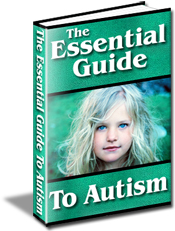5 Ways To Minimize The Negative Impact Of Change For Autism
Click Here To Know The Simple Methods To Effectively Spot The 31 Signs of Autism
Extreme change can be difficult for the average human being to deal with, but for a person with Autistic Spectrum Disorder (ASD), even the littlest change can be overwhelming. It is not uncommon for autistics to have trouble adjusting to a different schedule that breaks from a daily routine. Therefore, imagine the impact a dramatic change such as moving house would have on them.
Autistics have a hard time regulating their behaviour, so when they finally become accustom to a routine and are faced with change without warning, they may express their distress through:
• Verbal outburst
• Crying
• Self-injury
• Aggression
• Extreme withdrawal
The following are 5 ways in which you can minimize the negative impact of change by helping an autistic person become aware, prepared and involved in the moving process:
1. Calendar – Creating a calendar to help them become aware and prepared for moving can be helpful. Once you know the definite day you are moving, give notice months before moving day. You can cross off each day that passes, so they can see how many days are left until moving day. Make sure you Write “Moving Day” on the actual date so they can always see it.
If your child has difficulty understanding time with a standard calendar, use visual supports to help them understand time. For instance, if he or she relates time with day, creating a visual of a sun for each day and then a visual of a house on the actual moving day, will tell them how much time is left before the move.
2. Story books – Depending on your child’s level of comprehension, another helpful familiarizing tool is to read story books focused on moving home themes.
3. “Social Stories” – This is a specific learning program that helps autistics understand the reasons for situations they may find confusing or difficult. Social stories describe a specific situation in detail and focuses on a few key factors such as vital social cues, the actual event, and the reactions a person may expect during the situation and why. Social stories not only help to increase a level of understanding, they can also help an autistic child feel more comfortable when experiencing an event, and provide them with clues on how to react.
4. Creative Story – Create your own moving story to make the change more personal and easier for your child. In your story you can include different sections such as:
• Photos – Take photos of the new home, especially of their new room and the outside.
• Layout – Draw up a layout of the new home to show where their bedroom is located
• Maps – Show a map of where the house is and include important landmarks such as where the school, park, shopping mall, etc. is located from the home, and make sure to write down directions to each place.
• Similarities – Explain what will stay the same, such as the items in their room that will be coming along.
• Visits – Take them to visit the new home
• Questions – at the end of the story, take the time to answer questions.
5. Moving day - Moving is stressful on everyone. Therefore, when it comes to the day, you will need to decide if you would rather have them with you and provide tasks during the move, or keep them involved in their regular daily activities until moving is complete. Regardless of your decision, it is a good idea to make sure your autistic child’s room is set up first to help them feel more relaxed in the new environment.
Rachel Evans has an interest in Autism. For further information on Autism please visit http://www.essential-guide-to-autism.com/autism.html or http://www.essential-guide-to-autism.com/blog/2006/12/28/5-ways-to-minimize-the-negative-impact-of-change-for-autism/
Labels: asperger_autism_child_developmentaly_disorder_functioning_high_in_including_our_peer_pervasive_program_s.o.s_school_skill_skill_social_social_syndrome_their_typical, autism_child_home_page

